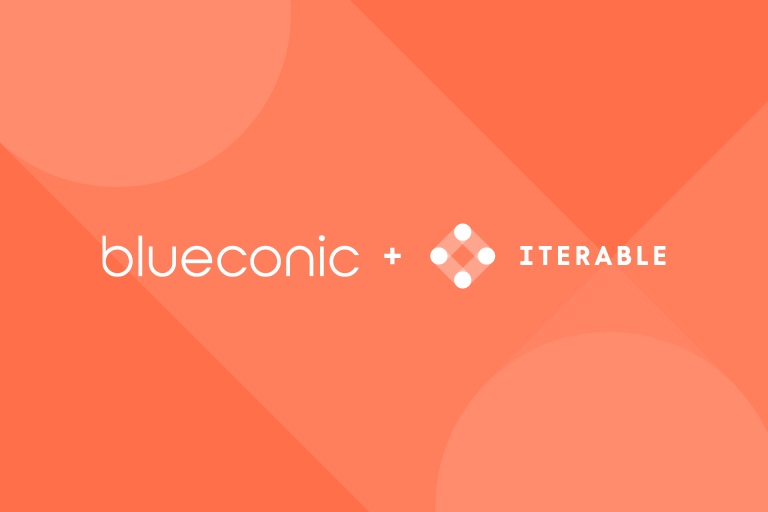BlueConic, the leading pure-play customer data platform, liberates companies’ first-party data from disparate systems and makes it accessible wherever and whenever it is required to transform customer relationships and drive business growth. Over 350 companies worldwide, including Forbes, Heineken, Mattel, Michelin, Telia Company, and VF Corp, use BlueConic to unify data into persistent, individual-profiles, and then activate it across customer touchpoints and systems in support of a wide range of growth-focused initiatives, including customer lifecycle orchestration, modeling and analytics, digital products and experiences, audience-based monetization, and more. Learn more at https://www.blueconic.com and follow us on Twitter and LinkedIn @BlueConic.
For decades, retailers have relied on third-party data as the backbone of their customer engagement strategy. It’s been the fuel driving everything from targeted ads and personalizing customer experiences, to improving campaign performance, and ultimately, increasing sales and profitability.
But a backlash against the misuse of consumer data has spurred new privacy protections from big tech and governments alike. Google, whose Chrome browser accounts for nearly two-thirds of the world’s internet usage, plans to phase out cookies completely in 2024, while Mozilla Firefox and Apple Safari have already done so. In addition, 137 countries now have national privacy laws in place that regulate how consumer data can be collected and used, with new state bills in the US seeming to pop up weekly.
All of these factors are resulting in a shift away from third-party data in favor of zero- and first-party data collected directly from consumers that’s both privacy compliant and offers deeper, more meaningful consumer insights. First-party data, as Neil Patel puts it, is “information companies collect from their own sources about their customers,” and it’s increasingly becoming the backbone of the most effective, targeted marketing campaigns for retailers in the U.S. and Europe.
While first-party data offers a number of benefits, one of the biggest barriers to harnessing its full potential is understanding the distinct ways it can be used to reimagine customer engagement and drive business growth. While the possibilities are endless, here are five fundamental ways retailers can make the most of their first-party data.
1. Strategic Email Marketing
Email marketing remains a potent tool for customer engagement. In fact, data shows email drives an average of $36 for every dollar spent — higher than any other channel. But to be truly effective, email campaigns must be strategically segmented based on the unique needs and interests of different customer groups.
When unified into comprehensive customer profiles, first-party data provides granular insights into individual purchase histories, browsing behaviors, product preferences, and more that retailers can use to create robust multi-dimensional segments. Their ESPs can then use these segments to personalize content, such as recommending products based on past purchases or sending exclusive offers tailored to specific customer segments. This targeted approach not only fosters increased customer engagement, but can significantly increase open and conversion rates.
2. Real-Time Personalization Across Channels
Modern consumers expect a seamless and personalized shopping experience across all marketing channels—not just email. In fact, data shows 75% of shoppers are willing to pay more for personalized online shopping experiences.
With access to unified, actionable first-party data, retailers can dynamically adjust website content, product recommendations, and promotions and employ targeted cross-channel strategies based on individual preferences and behaviors. For instance, if a customer opens an email but doesn’t make a purchase, retailers can use this data to trigger a follow-up SMS or push notification with a more compelling offer. This cross-channel engagement can help increase conversions and foster a deeper, more personalized connection with consumers.
Online retailer RevZilla was able to boost revenue by 35% simply by creating a more cohesive experience across email and SMS—their two main channels for keeping in touch with customers.
3. Lifecycle Marketing Campaigns
Modern consumers not only expect personalized and relevant interactions across channels, but also at different stages of their journey. By building long-term, mutually beneficial relationships with customers, retailers can boost their profitability by as much as 75% on average.
By collecting first-party data—including the likes of data on website visitors’ browsing habits, email engagement, social media activity or in-store shopping tendencies—retailers can tailor communications and promotions to specific stages of the customer journey, from initial awareness to post-purchase loyalty. This approach ensures that marketing efforts are highly personalized, fostering meaningful connections with customers at every touchpoint and optimizing marketing effectiveness throughout the entire lifecycle.
Take Bob’s Discount Furniture, where leaders are using their first-party data to support both short- and long-term lifecycle marketing strategies. For instance, because their purchase history is persistently stored in profiles, the Bob’s Discount Furniture is able to promote toddler beds to customers who purchased a baby crib two years earlier.
4. Enhanced Loyalty Programs
First-party data can also play an instrumental role in optimizing and personalizing loyalty programs. Armed with information such as the frequency of site visits and preferred products or services, retailers can tailor loyalty programs to offer personalized rewards, discounts, and incentives that resonate with each customer. This not only strengthens customer loyalty but also encourages repeat business.
Additionally, by analyzing data from loyalty programs, retailers can gain insights into customer behavior, enabling them to refine marketing strategies and further enhance the overall customer experience.
5. Optimized Media Spend
A more competitive advertising market coupled with privacy-related changes to ad targeting have driven digital advertising costs upwards of 60% over the last five years. To mitigate these costs, retailers need to find ways to allocate their advertising budgets more efficiently.
With access to unified customer profiles, retailers can create highly targeted and personalized advertising campaigns. This precise targeting not only enhances the effectiveness of digital marketing efforts, but also maximizes the return on investment (ROI).
Unlocking Your First-Party Data Potential
First-party data has become pivotal for navigating the challenges of the post-cookie, privacy-first era. By embracing the strategies above, retailers can adapt to the evolving industry landscape while delivering unparalleled value to their customers.
But success also depends on getting your first-party data house in order. By pairing a customer data platform (CDP) that makes first-party data accessible and actionable—like BlueConic—with a customer communication platform that enables personalization at scale—like Iterable—retailers can take a more holistic approach to customer engagement that not only optimizes marketing efficiency and effectiveness, but also fosters trust, loyalty, and lasting customer relationships.
































